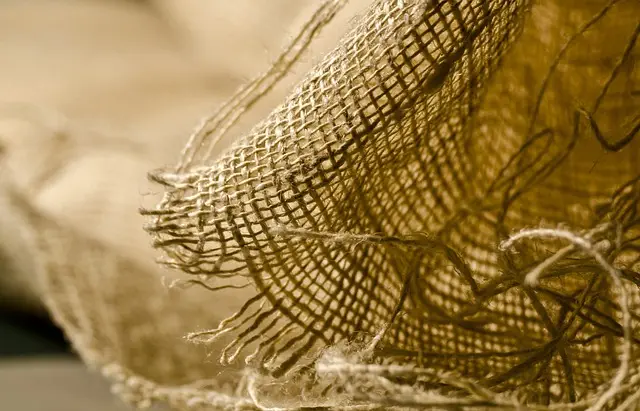Muscle soreness, known as delayed onset muscle soreness (DOMS), often occurs post-exercise due to muscle fiber tears and inflammation, peaking 24 to 72 hours after activity. Papua New Guinea Kratom, derived from the Mitragyna speciosa plant, has emerged as a potential natural supplement for managing this discomfort, thanks to its analgesic properties, particularly due to its alkaloids like 7-hydroxymitragynine and mitragynine. These components may engage with opioid receptors to provide pain relief. Users have reported that Kratom aids in managing muscle pain, enabling better recovery for resuming physical activities. However, it's crucial to use Kratom responsibly and follow safe usage guidelines due to its potent effects. When considering Kratom for muscle soreness, it's important to consult healthcare professionals, especially if using other medications or dealing with health conditions. The strains Maeng Da and Bali from Papua New Guinea are often recommended. For the best results, integrate Kratom into a holistic recovery regimen that includes proper nutrition, hydration, rest, and consistent exercise. By doing so, individuals may experience improved muscle recovery and a reduction in post-exercise soreness, leading to enhanced athletic performance and training outcomes.
Muscle soreness is a common experience among those who engage in physical activity, from casual gym-goers to elite athletes. This article delves into the mechanisms of muscle soreness and explores the potential benefits of Papua New Guinea Kratom as a natural remedy for relief. Subsequently, it provides guidance on how to effectively incorporate this potent supplement into your wellness regimen to enhance recovery and alleviate discomfort. Understanding the relationship between exercise-induced soreness and its management is key to maintaining an active and healthy lifestyle.
- Understanding Muscle Soreness and Its Relationship with Physical Activity
- Exploring the Role of Papua New Guinea Kratom in Muscle Soreness Relief
- Integrating Papua New Guinea Kratom into Your Wellness Routine for Optimal Muscle Recovery
Understanding Muscle Soreness and Its Relationship with Physical Activity

Muscle soreness, commonly referred to as delayed onset muscle soreness (DOMS), is a condition characterized by pain and tenderness in the muscles following intense physical activity or exercise. This phenomenon occurs due to microscopic tears in the muscle fibers from strenuous or unaccustomed workouts, leading to an inflammatory response that triggers the sensation of pain. Engaging in physical activities like weightlifting, running, or yoga can induce this type of soreness, which typically peaks within 24 to 72 hours post-exercise.
Understanding the relationship between muscle soreness and physical activity is crucial for both athletes and casual exercisers. Regular exercise is beneficial for overall health and wellbeing, but it can also lead to muscle fatigue and soreness. This is where natural supplements like kratom from regions such as Papua New Guinea may offer relief. Kratom, derived from the leaves of Mitragyna speciosa, has been traditionally used in Southeast Asia for its medicinal properties. In particular, certain strains of Papua New Guinea kratom are known to possess analgesic effects that can help alleviate muscle soreness. The active compounds found in kratom leaves may interact with the body’s opioid receptors, providing pain relief and potentially aiding in post-workout recovery. Users often report a reduction in discomfort, which allows for continued physical activity or promotes a quicker return to exercise after an intense session. However, it is essential to use such supplements responsibly and within recommended guidelines due to their potency.
Exploring the Role of Papua New Guinea Kratom in Muscle Soreness Relief

Papua New Guinea Kratom, derived from the Mitragyna speciosa tree, has long been recognized for its potential therapeutic properties, particularly in the realm of muscle soreness relief. Traditionally used by locals for pain management, this strain of kratom is distinguished by its unique alkaloid composition, which includes 7-hydroxymitragynine and mitragynine, both of which are believed to interact with opioid receptors in the brain, potentially offering analgesic effects. These effects may contribute to muscle soreness relief, making Papua New Guinea Kratom a subject of interest for those seeking natural alternatives to manage post-exercise discomfort or chronic pain conditions.
Research into the efficacy of Papua New Guinea Kratom for muscle soreness is ongoing, with some studies suggesting that its alkaloid profile may offer benefits beyond traditional pain medication. Users report a range of sensations from mild stimulation to sedation, depending on the dose and strain, which could be leveraged to tailor the relief experience for individual needs. It’s important for potential users to approach the use of kratom with caution, as it can interact with other substances and may have side effects. Consultation with healthcare professionals is recommended before integrating Papua New Guinea Kratom into any health regimen, especially when used in conjunction with other pain management strategies or medications.
Integrating Papua New Guinea Kratom into Your Wellness Routine for Optimal Muscle Recovery

Integrating Papua New Guinea Kratom into your wellness routine can be a prudent approach for those seeking muscle recovery and relief from soreness. This region’s kratom is renowned for its unique alkaloid profile, which includes mitragynine and 7-hydroxymitragynine, compounds that are believed to interact with the body’s opioid receptors. When used judiciously as part of a comprehensive recovery strategy, Papua New Guinea Kratom may offer benefits for muscle relaxation and pain management. It’s advisable to consult with a healthcare professional before incorporating any new supplement into your regimen, especially if you have existing health conditions or are taking other medications.
To effectively use Papua New Guinea Kratom for muscle recovery, it’s important to select strains known for their muscle-relaxing properties, such as the Maeng Da and Bali varieties. These strains can be consumed in various forms, including capsules, tea, or powder, depending on personal preference and bioavailability considerations. Regular use of this supplement should be complemented with proper hydration, a balanced diet, ample rest, and targeted exercises to facilitate muscle repair and overall well-being. Consistency is key, and by making Papua New Guinea Kratom a staple in your daily wellness routine, you may experience improved muscle recovery and reduced soreness, allowing for more effective training sessions and better physical performance.
Muscle soreness is a common experience among individuals engaged in physical activity, often perceived as a natural byproduct of exercise. However, addressing this discomfort effectively can enhance recovery and maintain an active lifestyle. Papua New Guinea Kratom has emerged as a promising supplement for muscle soreness relief, with its unique alkaloid profile potentially offering analgesic effects. By incorporating Papua New Guinea Kratom into your wellness regimen, you may find that it supports optimal muscle recovery, allowing for continued physical engagement without the hindrance of persistent soreness. As with any supplement, it’s important to consult with a healthcare provider before integrating Papua New Guinea Kratom into your routine, ensuring safe and effective use.






